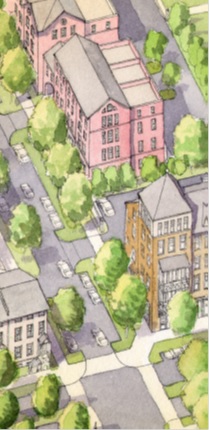Community Planning, Housing and Development Division, Arlington County, VA

Image courtesy of Dover Kohl & Partners
The Columbia Pike corridor, which stretches from the Pentagon through Arlington is a vibrant corridor encompassing populations with a great diversity of incomes, backgrounds and ethnicities. One of the county’s most significant reservoirs of market affordable housing, the corridor is experiencing rapid rent increases and threats to long-term affordability. As the corridor continues to redevelop and improve the quality of life for its residents through the addition of pedestrian-supportive amenities, mixed-use development and a planned new streetcar, the community has prioritized preservation of affordable housing. As a part of a multi-disciplinary planning team, PES conducted extensive market and financial analyses to inform the future planning process as to effective strategies to incorporate significant affordable housing into the corridor’s future plan.
PES began by analyzing conditions within Columbia Pike’s residential and commercial real estate markets, as well as those in the county and the broader Northern Virginia region. This analysis provided valuable insight into the long-term trends as well as the potential demand and pricing for various types of housing that might be developed in the corridor. PES reached out to stakeholders, including existing multi-family property owners, to encourage their participation and to assure that the plan’s strategies are realistic given property owner concerns and motivations.
A detailed financial analysis evaluated alternative densities, housing types, tenure, and developer type to test development feasibility and the potential for including affordable housing within new or renovated developments. The analysis considered financial feasibility given today’s rents and costs as well as anticipated rents and costs 10 years into the future. The urban designers then applied the lessons learned from these analyses to nine sites chosen to represent the range of conditions in the corridor (e.g., large, small, garden apartments, high-rise towers, historic, etc.). This iterative process informed both the financial analysis and site designs in exploring approaches to identify design solutions that would generate development capable of both preserving affordable housing and meeting the place-making priorities of pedestrian-oriented development with open space, connectivity and other community amenities.
In developing an effective implementation strategy, PES has tested the national spectrum of affordable housing tools that could mitigate impacts of gentrification on the corridor’s low- to moderate-income residents.

